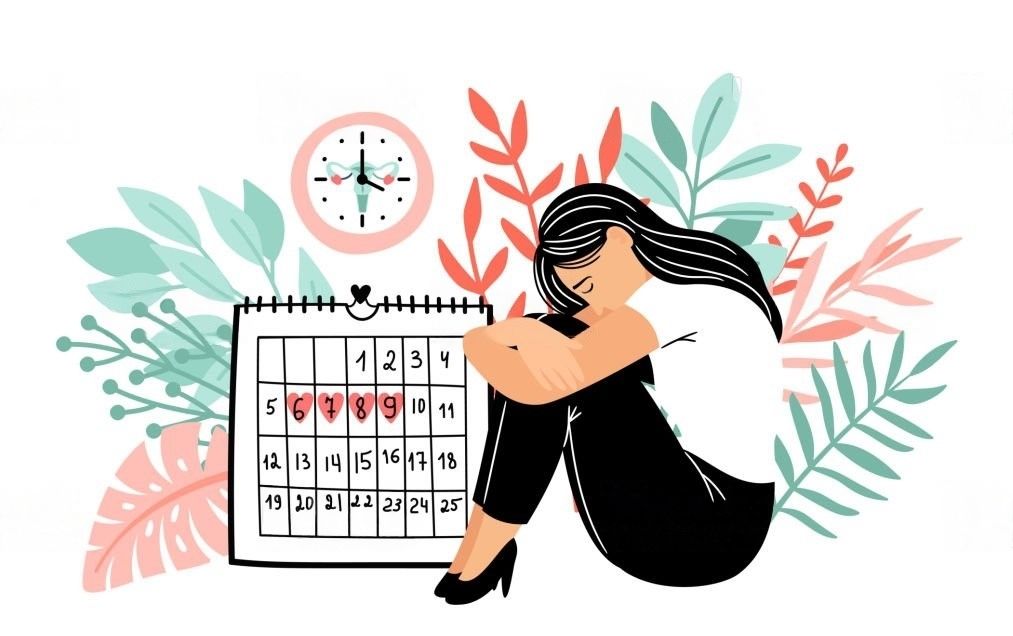Iron-Rich Foods to Combat Anemia During Menstruation
Maintaining healthy iron levels is critical for menstruating women to avoid anemia.

One of the difficulties of menstruation is the risk of anemia, which occurs when the body does not produce enough red blood cells. Anemia, a condition characterized by a decrease in red blood cells or hemoglobin, can cause fatigue, weakness, and dizziness. For menstruating women, maintaining healthy iron levels is crucial in preventing anemia. Iron levels must be maintained to avoid anemia.
Is iron deficiency related to menstrual flow?
Yes, an iron deficiency can disrupt your menstrual cycle. Iron deficiency anemia, which occurs when your body lacks enough iron to produce enough hemoglobin for red blood cells, can cause a variety of symptoms and complications, including changes in menstrual flow.
In some cases, iron deficiency anemia has been linked to heavier menstrual bleeding (menorrhagia). This is because low iron levels can cause an imbalance in blood clotting factors, resulting in increased menstrual bleeding. Heavy menstrual bleeding can aggravate iron deficiency, resulting in a vicious cycle.
Some women with iron deficiency anemia, on the other hand, may have lighter or more infrequent periods (oligomenorrhea).
Symptoms of Iron Deficiency Anemia:
Iron deficiency anemia occurs when your body does not produce enough hemoglobin for red blood cells, resulting in a decreased ability to transport oxygen throughout your body.
Iron deficiency anemia symptoms can vary and may include:
Weakness and fatigue: You may feel tired and weak even during normal activities as your body struggles to deliver oxygen.
Skin paler than usual: Low haemoglobin levels can cause your skin to appear paler than usual.
Shortness of breath: A lack of oxygen can cause shortness of breath, particularly during physical activities.
Dizziness or lightheadedness: Dizziness and lightheadedness can occur when there is insufficient oxygen reaching the brain.
Heart palpitations or rapid heartbeat: Your heart must work harder to pump oxygen-rich blood, resulting in an irregular or rapid heartbeat.
Here is a list of iron-rich foods that menstruating women can incorporate into their diets to maintain healthy iron levels and fight anemia:
1.Spinach (Palak): Spinach is a popular leafy green in Indian cuisine, and it is frequently used in dishes such as palak paneer and palak dal. It is high in iron and other essential nutrients, and it can help keep iron levels stable during menstruation.
2. Finger Millet (Ragi): Ragi is a nutritious grain that is high in iron. Ragi roti, ragi dosa, and ragi porridge are popular Indian dishes. Incorporating ragi into your diet can help you get more iron.
3. Legumes: Iron-rich legumes such as chickpeas (chana), kidney beans (rajma), and black-eyed peas (lobia) are commonly used in Indian cuisine. To maintain healthy iron levels, eat them in dishes like chana masala, rajma curry, or lobia curry.
4. Jaggery (Gur): Jaggery, an unrefined sugar made from sugarcane, is a traditional Indian sweetener with a high iron content. Consuming jaggery in moderation, as a substitute for refined sugar, can help increase your iron intake.
5. Almonds: Almonds are high in iron and can be eaten as a snack or added to dishes such as biryani.
6. Tofu: Tofu is high in protein and iron and can be used in dishes such as tofu tikka or stir-fries.
7. Dates: A sweet snack that is high in iron and other nutrients.
SUMMARY
Boost your iron levels during menstruation with Indian iron-rich foods like spinach, ragi, legumes, jaggery, and amaranth to combat anemia. Iron deficiency can affect menstrual flow, causing heavier or lighter periods. Incorporate these nutrient-packed foods into your diet to maintain healthy iron levels and promote overall menstrual health.
Jayti Shah is a Clinical Nutritionist with a master's degree in Clinical Nutrition and Dietetics. She is a member of the Indian Dietetic Association (IDA). Over the last 9 years, she has helped 400 clients in their clinical and weight loss journeys. She works with SocialBoat as a nutrition consultant.
At SocialBoat, we offer custom diet plans and guided workouts to help you achieve your goals in a 360-degree approach. Our gamified experience ensures that you don’t find workouts boring and we reward you for being consistent with your efforts.

REFERENCES
- Beard, J. L. (2001). Iron biology in immune function, muscle metabolism and neuronal functioning. The Journal of Nutrition, 131(2), 568S-579S.
- Hurrell, R., & Egli, I. (2010). Iron bioavailability and dietary reference values. The American Journal of Clinical Nutrition, 91(5), 1461S-1467S.
- Cancelo-Hidalgo, M. J., Castelo-Branco, C., Palacios, S., Haya-Palazuelos, J., Ciria-Recasens, M., Manasanch, J., & Pérez-Edo, L. (2013). Tolerability of different oral iron supplements: a systematic review. Current Medical Research and Opinion, 29(4), 291-303.
- National Institutes of Health Office of Dietary Supplements. (2021). Iron: Fact Sheet for Health Professionals. Retrieved from https://ods.od.nih.gov/factsheets/Iron-HealthProfessional/
- Abbaspour, N., Hurrell, R., & Kelishadi, R. (2014). Review on iron and its importance for human health. Journal of Research in Medical Sciences, 19(2), 164-174.
- Haas, J. D., & Brownlie, T. (2001). Iron deficiency and reduced work capacity: a critical review of the research to determine a causal relationship. The Journal of Nutrition, 131(2), 676S-688S.
